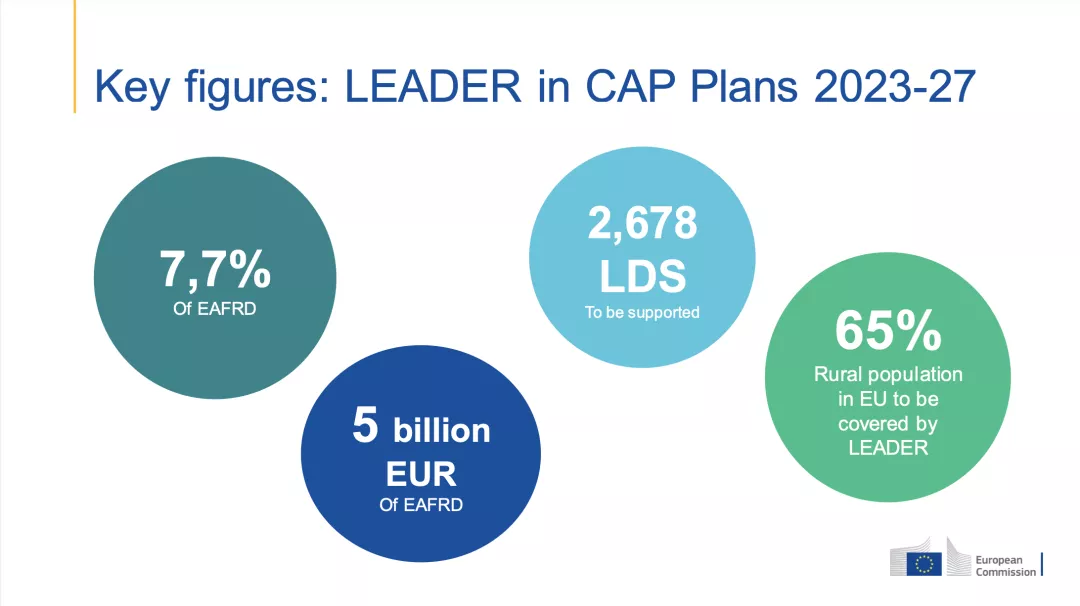LEADER facts and figures: New LAGs for 2023-2027
More than 2 600 LAGs are becoming operational in 2023 and these will implement LEADER through area-based Local Development Strategies that guide LAG funding for bottom-up development processes including innovation, networking and cooperation.
2023 is the year when the new CAP’s LEADER Local Action Groups (LAGs) are becoming operational. More than 2 600 LAGs are planned, and these will implement LEADER through area-based Local Development Strategies (LDS) that guide LAG funding for bottom-up development processes involving innovation, networking and cooperation, among other objectives, at regional, national and EU levels.
Reviewing the current set of national CAP Strategic Plans (CSPs) helps provide an overview of LEADER at the beginning of this programming period. Some five billion euros from the European Agricultural Fund for Rural Development (EAFRD) is to be available for LEADER through the CSPs. Other key figures from the CSPs for 2023-27 show that some 7.7% of CAP’s Pillar 2 is planned to be implemented by an expected 2 678 LAGs.
German rural areas are set to benefit from 15% of the national CSP’s EAFRD budget being managed by LAGs while Estonia and Spain also plan to spend more than 10% of their EAFRD allocations on LEADER. The average allocation across the EU for LEADER in the 2023-2027 CAP plans is just under 8%, with seven Member States allocating the minimum 5%. 24 out of the 28 CAP plans 2023-2027 indicate a higher LEADER allocation as a percentage of EAFRD than in the 2014-2022 Rural Development Programmes (RDPs).

A focus on smaller projects (under 200 000 euros) is common in the CSPs and other project scales can also be co-financed. These projects will prioritise funding for strong added value actions that could not have been achieved to the same degree without essential LEADER support.
CSPs identify a number of rural development themes where LEADER can demonstrate its achievements including: diversification of economic activities; short value chains; local food production; climate change mitigation, environment, and renewable energy; circular bioeconomy; rural services; small infrastructure; social inclusion; social innovation; cultural heritage, social and community life. We need to wait to see what themes emerge in the LAGs’ Local Development Strategies, which are starting to be written at local level.
Smart Villages may also be eligible for some CSPs’ LEADER funds and local capacity building of skills will feature in many LAG mandates. Youth empowerment and entrepreneurism as well as gender equality and the digital transition are highlighted as key areas of interventions in the CAP plans for EU countries’ LAGs. This can include external and internal LAG operations allowing LAGs to lead by example in good governance practices and project selection procedures.
2023 marks the starting point for all this potential, possibility and opportunity that LEADER and its LAGs and their communities can take advantage of. Many of LEADER’s aims are now known for this programming period. Added value, innovation, cooperation, equality and leaving no one behind are all forecast to feature prominently in LEADER’s future. We look forward to sharing examples of these good practices over the coming months and years.